Ready to capture 30% ITC before it’s gone?

This post was written by Josh Weiner, Solar Expert Witness & Solar Industry Expert. Mr. Weiner has been at the forefront of the solar energy industry for over 20 years and is an industry leader on solar-plus-storage engineering & design. Josh’s expertise spans both in-front of and behind-the-meter initiatives including residential, commercial, utility, grid-scale, and ev charging solar and storage applications.
We’ve seen this movie before. In 2008, project developers in the US prepared for the sunset of the 30 percent federal investment tax credit (ITC), a key source of financing for solar projects of all sizes. Urged on by industry lobbyists, Congress passed legislation extending the tax credit, and President George W. Bush signed it.
In 2016, the ITC was again due to expire. Congress and President Barack Obama gave the tax credit new life, preserving its 30 percent value until the end of 2019. In addition, they established a gradual step down over three years. In 2022, the credit settles at 10 percent for commercial and utility-scale projects. For residential projects, the credit goes away.
As the industry rallies to defend the ITC, this might look like the opening scenes of another sequel. But there’s no guarantee that the story concludes with the same happy ending.
With less than six months till the end of the year, let’s mobilize for the best possible outcome. But let’s also be prepared for expiration of the 30 percent ITC. After all, the tax code, under a mechanism known as the safe harbor provision, allows qualifying projects to preserve the full value of the 30 percent credit as projects advance through the development lifecycle, including projects that come online in 2020 and beyond.
A design and engineering firm can provide crucial assistance as the clock winds down on the 30 percent ITC. Because our services can help qualify projects for safe harbor, developers and EPCs working with SepiSolar can create value while taking steps to show that a project has commenced construction for federal tax purposes.
A specialized firm can also share knowledge about securing tax credits for solar and storage projects and maintaining eligibility throughout the project lifecycle.
Value creation for projects
When a developer engages an engineering firm to begin processing interconnection agreements, perform feasibility studies, and obtain PE stamps for project plan sets, this work buys valuable time for projects to mature.
The benefits to the developer are twofold. Project design work can help keep the 30 percent tax credit in play even after the calendar turns to January 2020. It also creates an opportunity to smooth workflow. Instead of hustling to complete projects in December, developers can start scheduling for the start-of-year “slow season.”
EPCs also benefit by increasing projected revenue. What’s good for the developer is good for the nimble EPC.
While evaluating tax equity for solar projects, consider opportunities to claim the fuel cell ITC for stand-alone storage projects. Vanadium flow batteries qualify because charging and discharging happens in an aqueous state through an embedded fuel cell. The process of preserving the 30 percent ITC is the same for qualified fuel cells as for solar projects.
In addition, SepiSolar can help design solar-plus-storage projects to optimize tax credits for different project risk profiles. To qualify for the ITC, a renewable energy source must supply more than 75 percent of energy to the battery.
In an AC-coupled configuration, electrons must be “counted” and “measured and verified” each time they’re generated and sent to a battery. Depending on generating capacity, storage capacity, and the project use case, it may be difficult to meet the 75 percent rule, thereby putting the tax credit at risk.
In some cases, it might be better to switch to DC-coupling for tighter control of ITC compliance. In a DC-coupled configuration, a project can ensure that all energy to the battery comes from PV and none from the grid. This would not only comply with ITC but maximize it.
Applying for ITC safe harbor
There are two ways to preserve eligibility for the 30 percent ITC under the tax code’s safe harbor provision. A project can start physical work, or it can incur 5 percent of an energy property’s total cost.
Design and engineering generally does not meet the conditions of the physical work test. But these services can be included in the 5 percent safe harbor test. As noted in a 2018 advisory from the IRS:
Construction of energy property will be considered as having begun if: (1) a taxpayer pays or incurs five percent or more of the total cost of the energy property, and (2) thereafter, the taxpayer makes continuous efforts to advance towards completion of the energy property.
To satisfy the continuity requirement over the months and years to come, projects can pay additional amounts toward the total cost, enter into binding contracts to produce project components or the project itself, obtain project permits, or perform physical work on the project.
Consult a licensed tax advisor with questions about how to apply provisions of the tax code to specific projects.
Engineering for safe harbor
Design and engineering services that help a project qualify for safe harbor under the 30 percent ITC can quickly pay for themselves. After all, the difference between a 30 percent credit and the 26 percent credit that kicks in on January 1, 2020, may be greater than the total cost of design and engineering, especially for commercial and industrial projects.
For instance, consider a 500 kW flat-roof solar project with an all-in cost of $1.50 per Watt.
Project cost
$750,000
30 percent ITC (2019)
$225,000
26 percent ITC (2020)
$195,000
ITC difference
$30,000
Estimated design and engineering fee
$15,000
Estimated savings
$15,000
Contact SepiSolar to find out how we can help secure safe harbor for solar and storage projects, extending development and EPC activities past the busy end of year and into the normally quiet early months of the new year.


